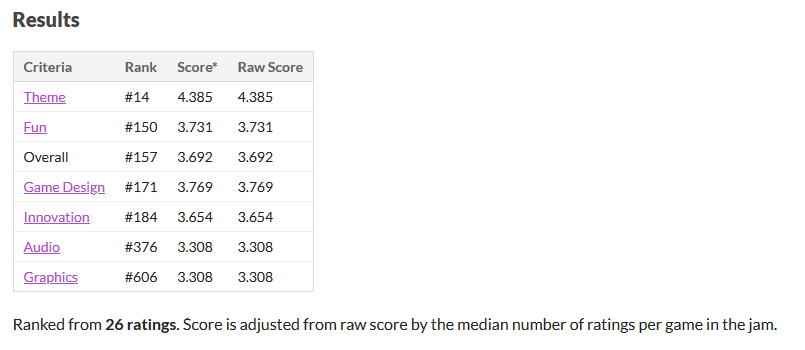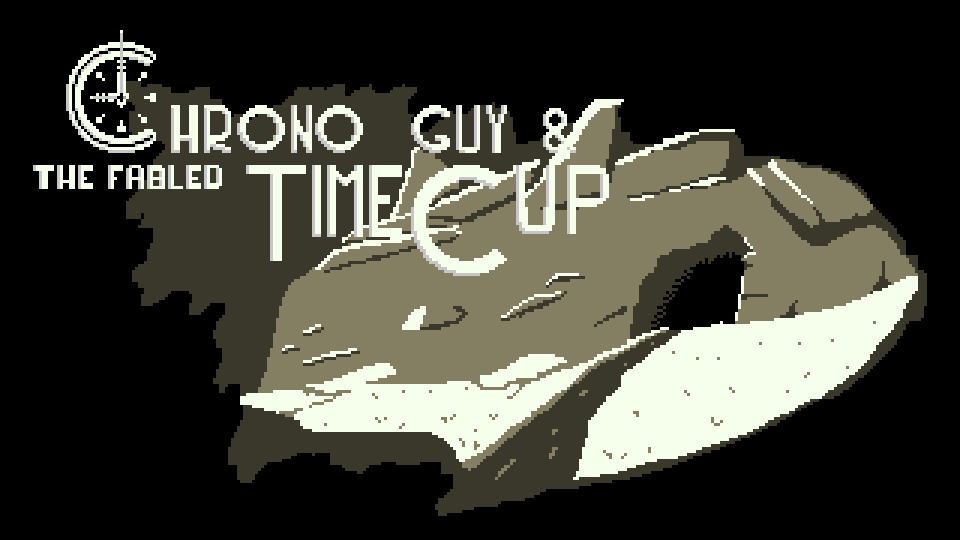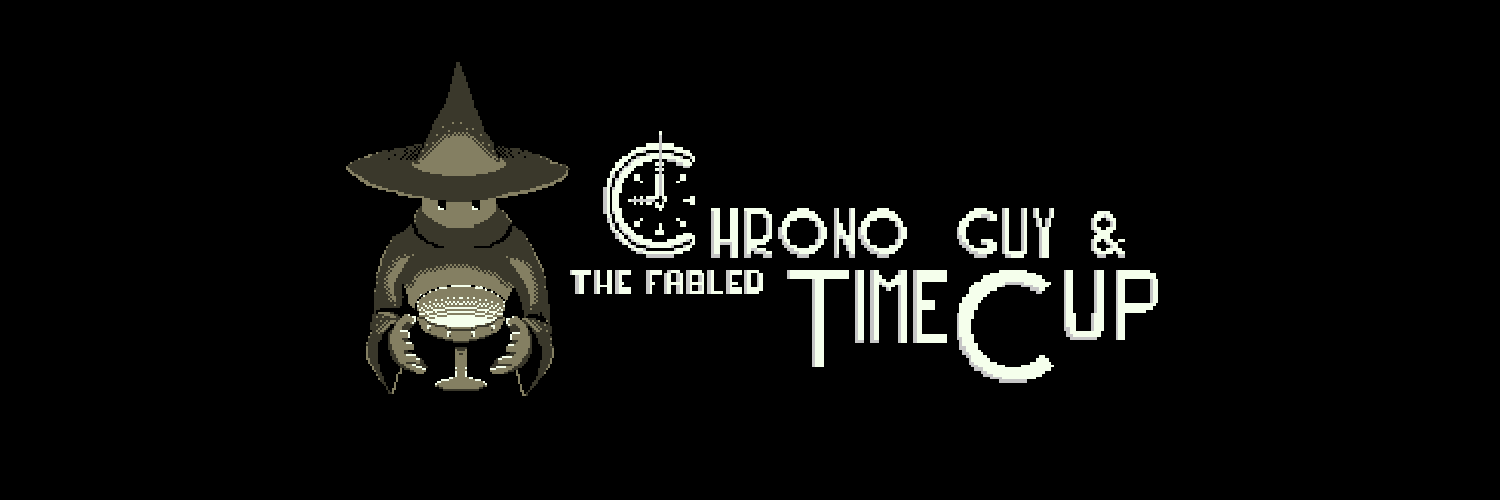Dipped my toes into the ocean but it was cold - Postmortem of my first ever polished-game
Introduction
Chrono guy and the Fabled Time Cup was my first attempt at entering the game industry - it's genesis from the Brackeys' 2020.2 Game Jam themed - Rewind. This game was not my absolute first experience at coding however, as I have made plentiful prototypes before this to get me familiarised with learning programming and unity in general.
Nevertheless, I dipped my toes into the ocean and it was cold. When veterans say that: no one cares about your game - as someone that has been averse to entrepreneurship in general, it took me this small game to internalise what that really meant.
This post-mortem will focus more than just marketing though - I will be segregating this post to 3 sections as all post-mortems are generally formatted as such for ease of reading:
- What went right?
- What went wrong?
- What have I learned?
And while the game was born from a game jam, the post-mortem will cover the game as an entirety ie. post-jam version. Without further udo:
What went right?
- Game Design

As a whole, the game did well in generating fun. From a total of 1,845 entries, this means the game was among the top 10% for funsies (although with a rating of 3.731).
Part of my workflow was identifying a core ruleset I want in my game: To have every interactable object to be rewindable. As such, in choosing the objects I plan to implement in my puzzle platformer game, I went with the few things that I thing will add most value to make use of my limited time. I think I achieved good workflow in that regard and hope to bring that forward in many other gamejam.
This ruleset was brought over into making my V2 update when choosing a final object to add. Contemplating over numerous options such as rising lava, walls that prevent rewinding past, objects that cannot be rewound - I went with adding a fan instead. While simple in hindsight, the fan is technically a moving object, as such you can rewind it and it will suck you in. I think this fits well in line with my ruleset and consequently, fit well into the game as a whole.
I think having everything closely tied to the core mechanic adds more relevance to that core mechanic, and lets the player feel like they are continuously learning new things even when exposed to the same core mechanics.
- Code Architecture and Programming
While some parts of the code can definitely be improved, what I think helped the most were Brackeys' own videos on rewinding objects, and setting up a Timebody parent script which all interactable objects will be child of. This form of clean architecture allows me to easily iterate on, and make new objects later down in V2.
This form of code architecture I feel will be something important when working on large, long-term projects that demand more lines of codes with more complicated mechanics weaving onto one-another. V2 inevitably had a few new bugs introduced with the new content but as a whole, I think I succeeded in this aspect.
- Learning to perfect the execution of a simple idea
There were other games that took on a similar idea as to what I had in mind such as Rewind by jimmyc5 which I think definitely did the execution extremely well (and consequently they got really good ratings naturally). While I did not perform as well, I feel like I have learned more in the journey to executing an idea of what I had in mind - to better create a game from paper onto the screen.
Game design is integral to binding all of the game elements together to make a good game and to execute on that game design (especially as a solo dev) is something that I think I did well on this project in particular.
What went wrong?
- Audio and Graphics
A game is an artistic/creative product - an amalgamation of mechanics, music, art, sound, story all brought together to create something better than the sum of all its parts - something I believe as the best form of interactive medium (or medium as a whole). With that context settled, I have failed in the audio and graphics department I believed, having scrapped its importance in favour of game design and development within the more technical aspects of the game.
This is made more evident when the first thing I decided to work on in V2 was giving the game a fresh coat of paint.
I would also give myself some leeway as game jams, do not need super high quality stuff - but it does help me realise the importance of art. After all, the first thing that people always see are the screenshots, or the trailer - so good art is almost essential to pull people in towards buying your game.
- QA (or lack thereof)
Among the most prominent issues with the game I feel were the lack of playtest from during the game jam and post-jam production. The consequences were that numerous bugs were left unfounded as they were hidden under my own biased playtesting. During the jam production, a particularly game breaking bug was found and left unnoticed which may have tanked the game's scores.
I never motivated myself to find paytesters from a variety of reasons but most prominently was from fear of reprimand or appearing needy. During the post-jam, the game was short enough to not warrant any closed-beta testers for a short project so in the end it was released without any significant playtest except those I did on my own.
Bug Fixing (and consequently, quality assurance) was something I felt was lacking in my game and is definitely something I should definitely favour more before too quickly moving over to polish.
- Marketing
While marketing is relatively limited as a 1-month game, it helps to acknowledge that any marketing counts. For marketing, it is a bit of a mixed bag. There were definitely some things I did right but some others I don't do right.
Leading up to the launch day, I was only posting on twitter around once or twice a week with small updates with hashtags #indiedev #gamedev mostly, when I should also be pushing towards potential gamers using tags like #puzzle #platformer more earlier on. I should also have been posting on reddit much earlier on during this period to potentially gain more traction leading up to launch.
During the launch day of update V2, there was another influx of views and downloads albeit, baby numbers as they are, shows the importance of marketing. I was spreading word of it on reddit, imgur, itch.io community forums and twitter about the game during the launch day of update V2.
But ultimately, the V2 update that I worked on for a month was only played by 4 new people (as of this writing). While I am still very proud of my project and general progress I've made in this 1 month of work, this helps me internalise the importance of marketing in a broader sense - lending me to better make more efforts in marketing where I can.
- Scheduling
This was simply a small point to make for my own reference. Scheduling during the jam was fine and the game was finished ahead of time. However during the post-jam production, I initially planned myself to finish this within 2 weeks only to have it extended towards 4 weeks. Part of this was in due to unwarranted adding of cutscenes after core essentials of the patch was added. Basically, I introduced a bit of scope creep in this V2 update in the form of more art assets (cutscenes) and forced me to release the game before I delay it too long. While not essential, features that I initially planned to add such as improved UI, improved main menu, other more essential polish ended up being scrapped in order to make time for the cutscenes.
While much of this was self-imposed deadlines, I feel this would be important in future project managements (setting deadlines and keeping in time etc.) hence it is a point I must make note, especially to myself and my own development as an indie game developer.
A common argument that a delayed game is always better than a rushed game can be brought up here, but I'm riding more on the principles that if I'm on a limited budget (and when I choose to enter full-time later down the line), I have to make every cent count hence a careful management on scope creep.
What I have learned?
- Marketing
Something that David Wehle, creator of The First Tree, used in his visuals-first development to allow marketing early on from its genesis is something I'm looking forward to employ in bigger projects later on to better build a community and advance my marketing. Learning the importance of marketing, or establishing a bigger presence on the internet is crucial to getting the game into people's hands.
Taking forward from this I have started to make a simple website, looking to start a discord community to collect beta testers, and contemplating on starting a youtube channel to record video devlogs every now and then.
In terms of the marketing effort, I should have marketted about the release of V2 much earlier instead of what I initially did with only 1-week beforehand. A much more earlier release reveal will allow hype to gradually build until the final release. Bigger games typically go for 6 months reveal before release and I'm thinking of adopting that approach as I progress towards commercial-ready games.
- Scheduling
People often say that whatever idea you have, cut it by half and make the game. That was something I did approaching this game but I did not estimate the time needed well so now that I have some context to the amount of work I can do per week, I hope to better improve on this.
Admittedly, I do not have a concrete way of recording the work I have done per week so I am looking into github for version control, as well as have a more statistical manner of tracking lines of codes written, for example, in calculating work done per week.
- Art, Game Trailers and Making Good Impressions
Art is important for first impressions - especially in the growing market where more and more games are released as every day goes by. What the jam-version of my game definitely suffered was the relatively poor art and it was very obvious that the first thing I needed to work on, was a fresh coat of paint when entering V2 updates.
The game trailers made for the game was my own creation - and I am beginning to understand the weight of a solo developer in this regard. A game trailer is vital to getting people notice your game, and potentially getting your game on the front page etc. In the future, I will reconsider sourcing the trailer from a proffesional to output a trailer better than what I can do.
GIFs and screenshots were central to my marketing technique - having learnt its importance from other developers. When making tweets, I would often include at least a screenshot, or a GIF. Tweets with videos don't do as well (yet) so I will continue to stick with GIFs as they have highest impact. Moving onwards, I will continue to learn to make better GIFs and start sharing them on reddit as well - I think Reddit, Imgur has the potential to garner a large amount of virality (if it does hit) and hence, a big spike in attention towards your game.
Closing Words
I think it goes without saying, damn, why am I doing a post-mortem for a 1-month game. My answer is:
Pfft.. I don't know.
I just felt like I want to make learning from each game as meaning as I can. This is therefore, a brief write-up of what I think and what I can learn moving forward. And hey, maybe after a lot of post-mortem, I could do one of those TOP 30 TIPS FOR BECOMING A GOOD GAME DEVELOPER kind of video.
Well, I hope you enjoyed reading the entire length. I have other works in mind now so if you're interested in following closely, consider following my twitter here.
Get Chrono Guy and the Fabled Time Cup
Chrono Guy and the Fabled Time Cup
Classic Puzzle-Platformer meets Time Rewind
| Status | Released |
| Author | Steventus |
| Genre | Puzzle |
| Tags | 2D, Puzzle-Platformer, Singleplayer |
| Languages | English |
More posts
- V2 Release!Sep 19, 2020
- V2 Final Steps in Progress and Release Date Announcement!Sep 13, 2020
- V2 Progress - A Windy Area!Sep 06, 2020
- V2 Progress - Fresh Coat of PaintAug 30, 2020
- V1.1 - The Day-1-Post-Jam-Bug-Fixing-and-Polish UpdateAug 23, 2020


Leave a comment
Log in with itch.io to leave a comment.